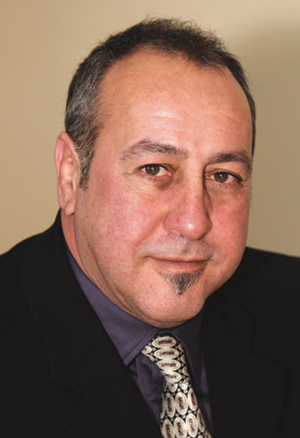If you’re too broke to offer the electorate tax cuts at election time, what else can you do to put money back in their wallets?

Well, you can lower their auto insurance rates. Who wouldn’t want to save 15 per cent when the average premium in Ontario is $1,600? That’s $240 a year back in a driver’s pocket.
Of course, to get that, you have to give a little and so the insurance industry, which has already pressured the government to lower payouts and impose restrictions on compensation to accident victims, is getting a little more of what it wants in exchange for lowering rates by 15 per cent by next year.
To move the issue along, Finance Minister Charles Sousa tabled the fighting fraud and reducing insurance rates act last week. The legislation builds on former Superior Court associate chief justice Douglas Cunningham’s review of Ontario’s automobile insurance dispute resolution system. He delivered his final report in February, but most of the recommendations were in the interim report last fall.
Cunningham had two tasks: to consider whether mediation should remain mandatory for Ontario auto insurance disputes and look at how best to deliver auto insurance dispute resolution whether by government, the private sector or a combination of both.
His recommendations touched on the systemic causes of and solutions to the mediation backlog and potential changes to the current structure. They include suggestions for a delivery model and process, the addition of a dispute prevention component, and other issues related to the viability of the dispute resolution system.
What he found was common knowledge. The system is experiencing major backlogs with 16,000 cases and the Greater Toronto Area driving much of the demand for mediation and arbitration. Though new files fell off in 2013, “Mediation applications more than doubled from 2007-08 to 2011-12 despite no increase in motor vehicle accident (MVA) injuries,” wrote Cunningham.
Further, he wrote: “The number of MVA claims accessing the courts has also been increasing since 2010 with treatment disputes the most common.”
Why has this happened? The industry blames fraud but the Canadian Bar Association says shifting to the no-fault approach has been a disaster.
“I am certain that when the first no-fault auto insurance system was introduced in 1990, policy-makers did not contemplate that the claims process and the [dispute resolution system] would become so adversarial,” noted Cunningham.
“This was very much reflected in the feedback received from stakeholders. The insurance industry points to the plaintiff bar as the source of the system’s problems, while the legal community blames the practices of the insurance industry. Neither is an accurate portrayal of the current system.”
In all, Cunningham made 28 recommendations to streamline the process, introduce fairness and transparency, and set time limits of six months to stop these files from dragging on forever.
The changes may result in fewer billable hours, but clients will be happy to see the process streamlined and the Insurance Bureau of Canada has already come out and applauded them.
The legislation would sensibly take the dispute resolution system out of the purview of the Financial Services Commission of Ontario and move it to the Ministry of the Attorney General’s Licence Appeal Tribunal since that department oversees several of those types of forums.
Given the government’s fetish for consultation, there’s a wealth of other recommendations from other task forces such as the auto insurance anti-fraud task force that tabled 38 ideas in November 2012.
The new legislation incorporates many of those recommendations and demands the insurance industry cut its costs, especially in the area of fraud that they maintain is the biggest reason why Ontario’s auto insurance rates are the highest in Canada.
For example, Sousa announced last December that the government would require health service providers to have a licence in order to bill insurance companies directly. It’s a move that puts control of fraud in the industry’s hands. But now they’re going to phase that in. Further, the government will look at setting up a special investigation and prosecution unit to investigate auto insurance fraud.
Other task forces have also reported on reducing some of the petty costs insurance companies face such as towing and vehicle storage and the province has indicated it will move towards stronger provincewide oversight of the towing industry and change the rules regarding the notification of vehicle storage.
The irony, of course, is that the Liberals give with one hand and tax it away with the other.
Don’t be surprised, then, if they stick to their plan to roll out so-called revenue tools through increased gas, parking, and road taxes to pay for their ambitious transit plans and claw back some of those auto insurance rate savings.
Ian Harvey has been a journalist for 35 years writing about a diverse range of issues including legal and political affairs. His e-mail address is [email protected].

 Well, you can lower their auto insurance rates. Who wouldn’t want to save 15 per cent when the average premium in Ontario is $1,600? That’s $240 a year back in a driver’s pocket.
Well, you can lower their auto insurance rates. Who wouldn’t want to save 15 per cent when the average premium in Ontario is $1,600? That’s $240 a year back in a driver’s pocket.